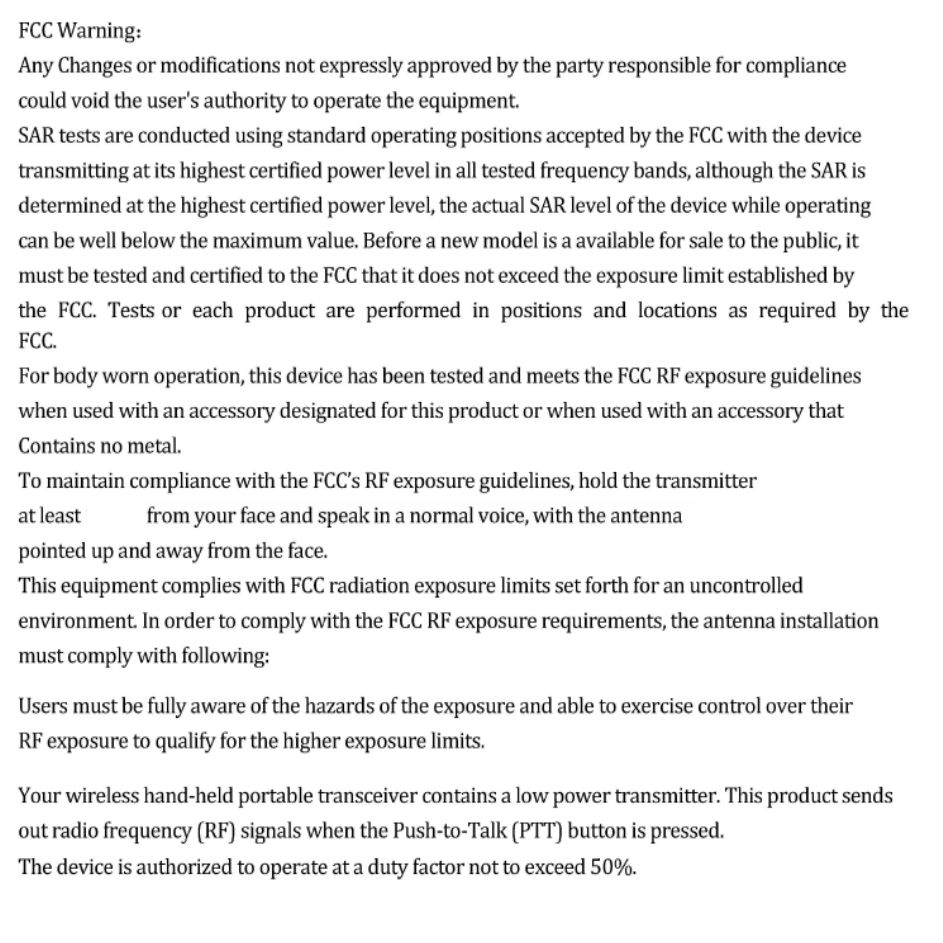Getting Started Guide
Table Of Contents
- Safety Information
- Getting Started
- Operation
- Menu Functions
- [01: ABR] Backlight
- [02: SAVE] Battery Saver
- [03: TXPOW] Output Power
- [04: VOX] Voice Activated Transmit
- [05: VOX-DLY] VOX Delay
- [06: SQL] Squelch
- [07: ROGER] Roger Beep
- [08: TOT] Transmit Overtime Timer
- [09: TOA] Transmit Overtime Alarm
- [10: VOICE] Voice Guide
- [11: BEEP] Button Beeps
- [12: BCL] Busy Channel Lockout
- [13: RX-DTC] Receive CTCSS/DCS Tone
- [14: TX-DTC] Transmit CTCSS/DCS Tone
- [15: SC-REV] Scan Method
- [16: CH-NAME] Channel Name
- [17: PRI-CH] Priority Channel
- [18: PRI-SCN] Priority Scan
- [19: S-TONE] Single Tone Pulse Transmission
- [20: SC-QT] CTCSS/DCS Scan Save Options
- [21: PONMSG] Power On Message
- [22: SCN-ADD] Scan Add / Delete
- [23: SCN-GP] Scan Group
- [24: SCN-CD] CTCSS/DCS Scanning
- [25: AU-LOCK] Auto Lock
- [26: LOCK-M] Lock Mode
- [27: SECOND] Stopwatch Timer
- [28: PF1] Side Key PF1 Assignment
- [29: PF2] Side Key PF2 Assignment
- [30: RPT-RCT] Repeater Reception Confirmation
- [31: DC-VLT] Battery Voltage Display
- [32: QT-SW] Tone Scanning Compatibility Check
- [33: CH-MDF] Channel Display Mode
- [34: RESET] Factory Reset
- Troubleshooting
- Technical Information
- Optional Accessories
- Limited Warranty

2.5cm
Note: This equipment has been tested and found to comply with the limits for a Class B digital device,
pursuant to part 15 of the FCC Rules. These limits are designed to provide reasonable protection
against harmful interference in a residential installation. This equipment generates, uses and can
radiate radio frequency energy and, if not installed and used in accordance with the instructions, may
cause harmful interference to radio communications. However, there is no guarantee that
interference will not occur in a particular installation. If this equipment does cause harmful
interference to radio or television reception, which can be determined by turning the equipment off
and on, the user is encouraged to try to correct the interference by one or more of the following
measures:
—Reorient or relocate the receiving antenna.
—Increase the separation between the equipment and receiver.
—Connect the equipment into an outlet on a circuit different from that to which the receiver is
connected.
—Consult the dealer or an experienced radio/TV technician for help.










